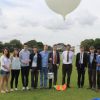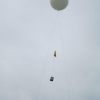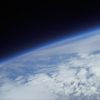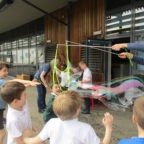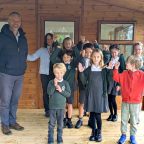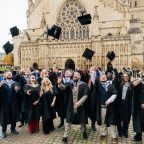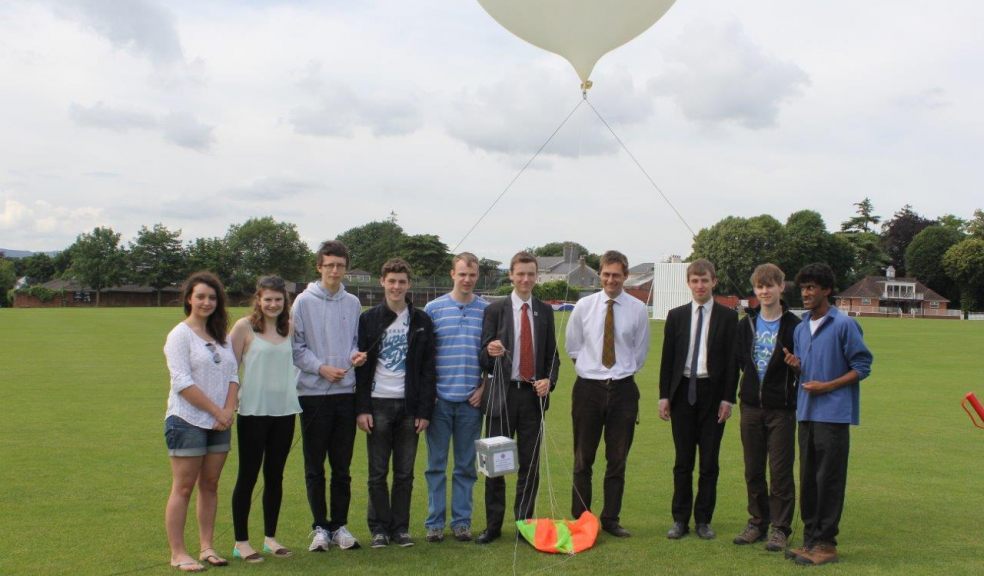
Sixth formers launch camera into space
Exeter School sixth formers have successfully launched a camera into space where it took hundreds of photos of earth from 82,000ft.
The camera was carried by helium balloon into the stratosphere in a joint project between the School's Physics Department, Electronics Department and Crossing Club on Monday 30 June.
Funded by the Exeter School Parents' Association, the aim of the Exeter School Space Photo Project was, quite simply to take photos from the edge of space.
Dr Houghton, Head of Electronics, explained: "Planning started last September when pupils researched and bought all the electronic components, programmed the on-board computer, calculated the sizes for the balloon and parachute to get the ascent and descent we wanted."
The Exeter School pupils sought permission to launch from the Civil Aviation Authority (CAA) and carried out a test run in May.
On Monday 30 June, the pupils asked the CAA to issue a notice to air personnel (NOTAM) and the launch team, consisting of sixth formers Bilal Korimbocus, Emily Thomas, James Krafft, Laurie Kirkcaldy, Seb Wright, Alex Hood, Andrew Brind, Michael Carrington, Hannah Berrisford, Dr Houghton and Physics teacher Mr Schramm, prepared for take-off.
At break time, with the rest of the School watching, the balloon was filled with about 2.5 cubic metres of helium, the parachute and payload were attached and they were let up on a tether.
After a final phone call to air traffic control, the balloon was released at 11.17am from Exeter School playing field rising at a little over 5 metres per second (300 metres per minute) and transmitting its position by radio.
Dr Houghton continued: "The on board GPS tracker attached to the Raspberry Pi computer recorded it as reaching 12,000 metres (over 39,000 ft) by 11.56am. After that, the tracker failed, but we think that the balloon carried on climbing to about 25,000 metres (82,000 ft) before it expanded to about 7 metres across and burst at 12.42pm.
"The payload then fell, very quickly at first, passing through 12,000 m at 1pm before its parachute started to take effect in the thickening atmosphere so that it was only dropping at 3 m/s at the end. It finally landed in a field about 4 miles NE of Honiton at 1.37pm.
The recovery team of Bilal Korimbocus, Laurie Kirkcaldy, Andrew Brind, Michael Carrington and Dr Houghton located the payload and parachute, 27 minutes later at 2.04pm and were delighted to find it completely undamaged and with over 5000 pictures held on the camera's SD card.
Dr Houghton said: "This was a very ambitious project and there was a lot that could have gone wrong, but the pupils put a lot of thought into planning for all eventualities and thoroughly deserved their success. We are all delighted with the pictures."
Mr Bone, Head of Science, said: "This inspirational project has been two years in making, and I am delighted it has been so successful. Our pupils, expertly supported by Dr Houghton and Mr Schramm, have stepped up to the challenge, working hard to overcome the inevitable problems and complications which arise from such a project.
"I have been amazed by their inventiveness and dedication, and how enthusiastic they have been from the start. Even more ambitious plans are already afoot for our second launch in a couple of years' time and I can't wait to see what the next group of Exeter School space scientists can achieve."









